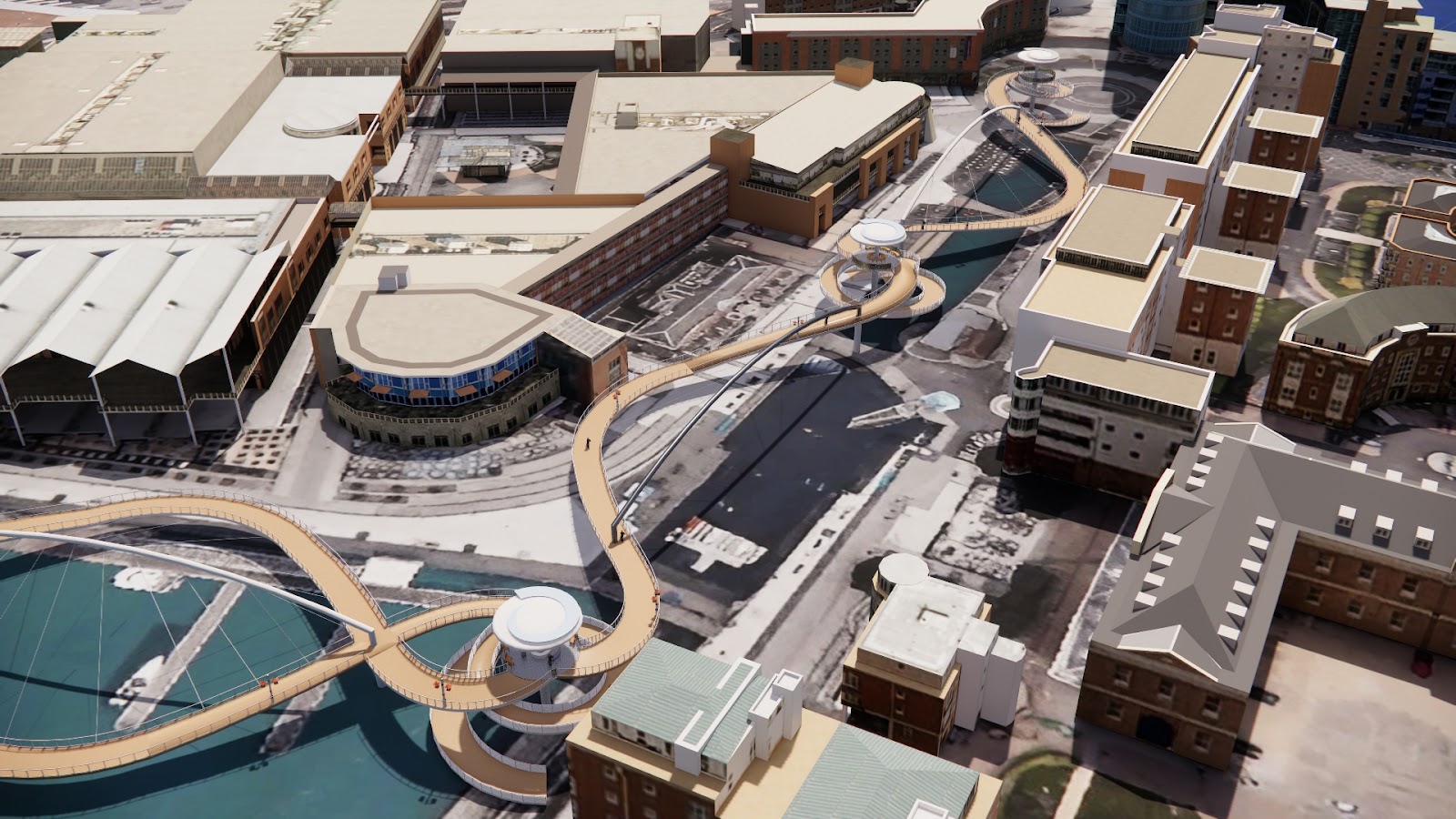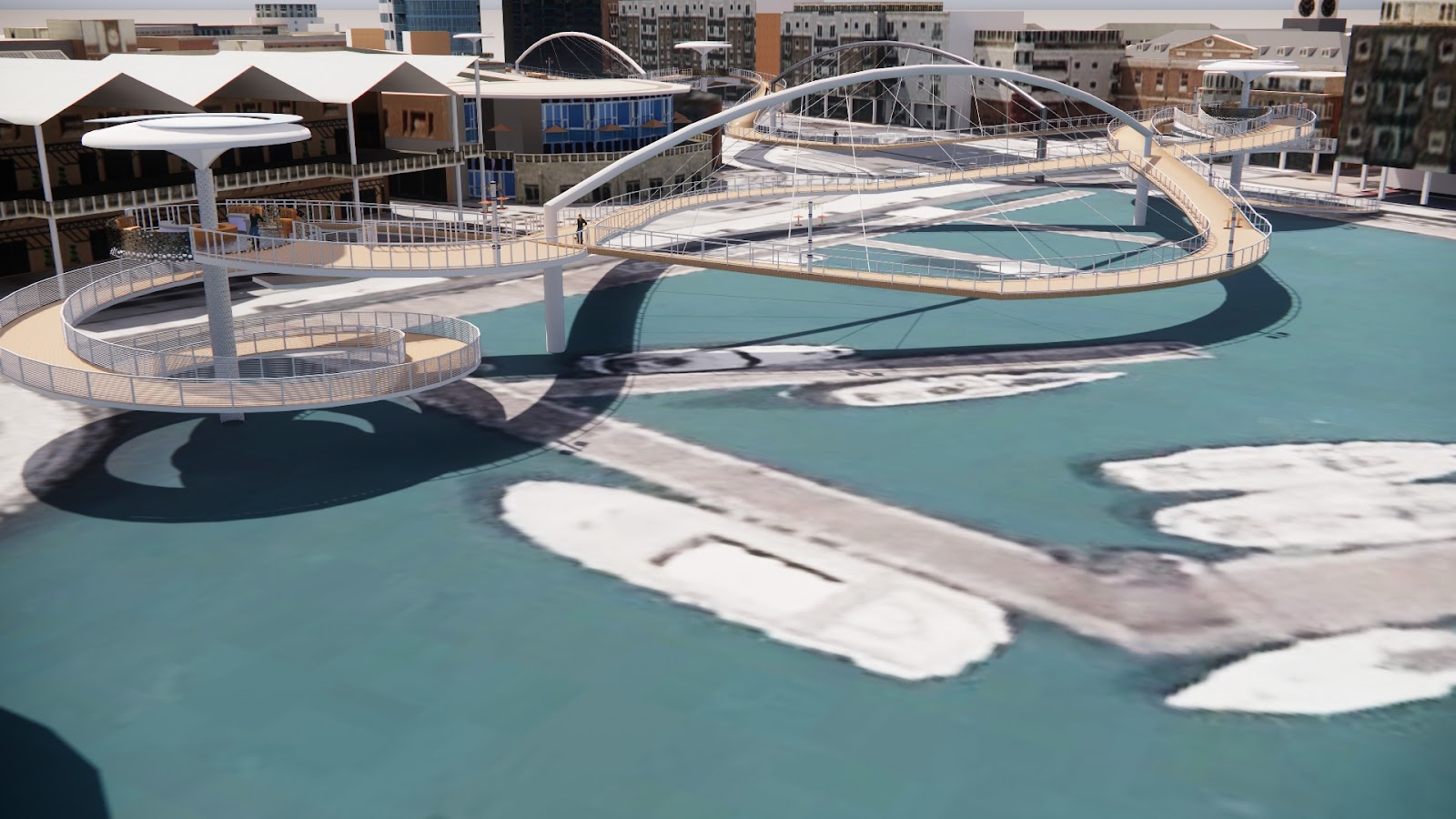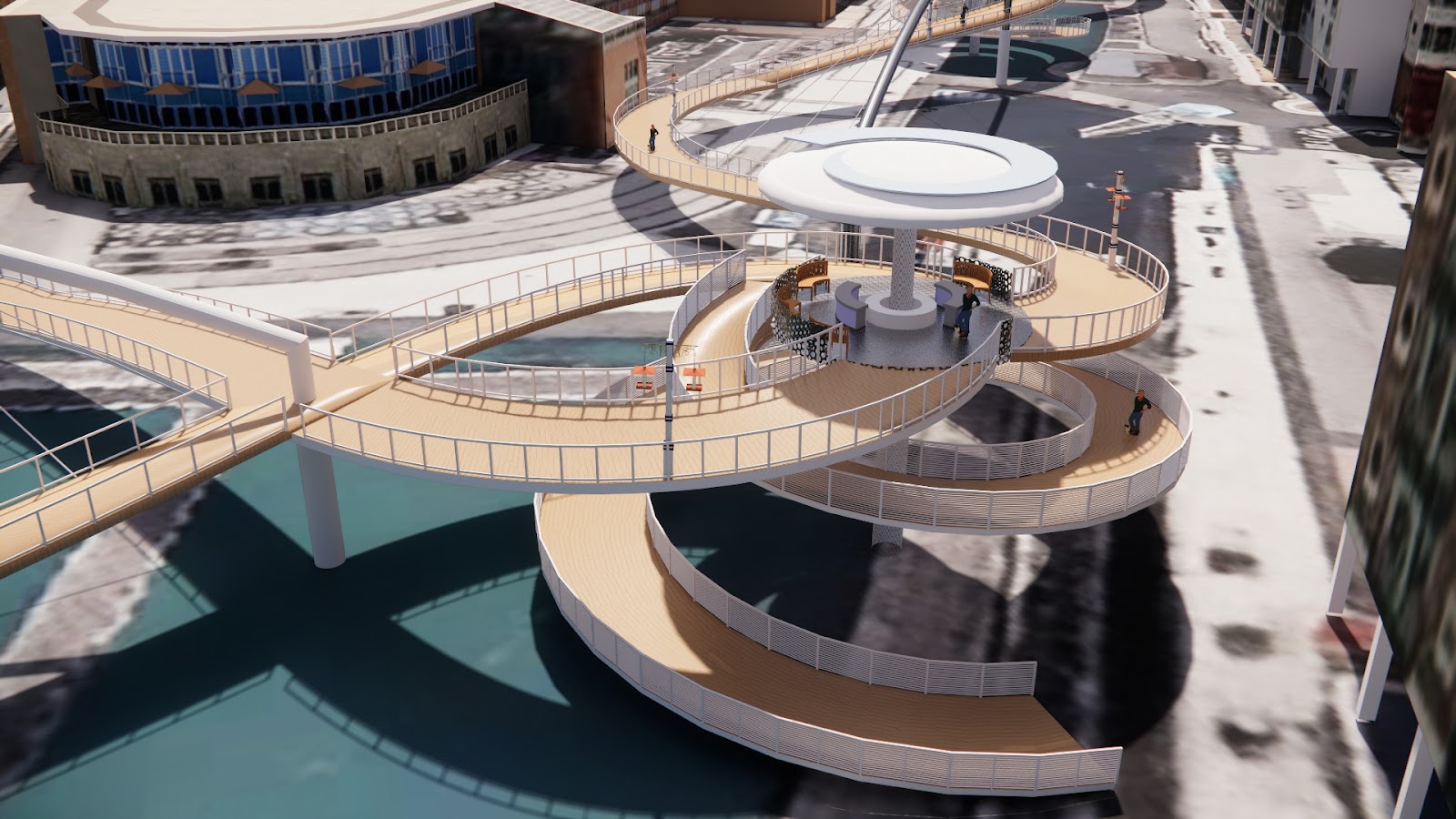_thinkMake (Spatial Design Practices: Situated Ecologies) - Design
Finding and locating a specific Issue related to the community or visitors
The discussions around capitalism and its impact on places like Gunwharf Quays shopping centre often revolve around the broader economic and social implications of such retail spaces.
My matter of concern for gunwharf was related to
restrictions developed by capitalism and the way people have to utilize and follow along the movement of flow that is intentional and lack of playfull ness in the space.
So my intention was providing visitors for through a series of movement that could be enjoyed along as similar experience to round tower and square tower with spiral raised walkways to let people enjoy spatial experience instead of shopping which was supposed for them to function.
It does not follow “rules” or acquire specific aesthetics, nor is it a rebellion against a social dilemma. It is the unleashing of infinite possibilities of playing around with forms and volumes.
“Line” by Tim Ingold is a fascinating exploration into the significance of lines in human life. Ingold delves into the concept that life is not built from static blocks but is woven from dynamic lines—knots that interconnect with each other. The book is divided into three parts:
Knotting: Ingold suggests that the world is woven from knots rather than constructed from blocks. He explores how things join together in various forms, such as in walls, buildings, and bodies, and how this knotting underpins the composition of the ground and our knowledge of it.
Weathering: In this section, Ingold argues that to understand living lines, one must also consider the weather. He introduces a ‘meteorology’ that seeks the common denominator of elements like breath, time, mood, sound, memory, color, and the sky—essentially, the atmosphere.
Humaning: The final part extends the concept of lines into the domain of human life, emphasizing that our actions must be framed within the lives we undergo. Ingold posits that life is a continuous process of responding and corresponding, which is fundamentally social.
Developing movement of linear and non linear series of lines
according to the precedant Lines by Tim Ingold.
By using a tracing paper on a map and try to imagine of what it felt like to be when I was walking with my object that lead me through new spatial experiences.
I started with four main focal points whuch are the most important location along the harbor and walkway in them middle. And connecting them with forms and flows that I have moved or experienced the same with smooth spiral ramps and flow which is formed by connected with methods that I have used in the theorial thing such as interlocking, twisting, joining, wiring, welding etc. then formed raised spiral walkways with ramps, including seatings, viewing decks, food stalls and bird feeders where people cam enjoy different spatial experience apart from shopping.
yetejmte

Materials
Decking - Cork Composite is 100% natural, reusable, and recyclable. It offers technical characteristics such as lightness, acoustic and thermal insulation, and resistance to friction
Railing -. Perforated steel or aluminium, which is commonly associated with naval decking in more modern ships
Or recycled plastic grids, utilising marine waste, to emphasise the costal nature of the region and its commitment to the environment moving forwards.
Matrix of the process of work































Comments
Post a Comment